Moles can be removed for two reasons: aesthetic or medical. Is it worth doing? If there are signs of melanoma, the doctor will advise removing the dark or red formation. In other cases, small spots on the body do not pose any threat.
Is it possible to remove moles?
Benign age spots in themselves are not dangerous as long as they retain a clear shape, remain flat and have a characteristic brown color. Some of them begin to grow over time. There is nothing supernatural about this either. Most people try to remove a mole when it attracts attention, is located in the face, neck, cheeks, around the eyes and spoils the appearance in life and in photos.
Some lesions are warts or seborrheic keratoses. Do moles of this kind need to be removed? A dermatologist treats them by freezing or cauterizing, but dangerous nevi can only be removed surgically when there are special indications for this:
- increase in growth in size;
- color change (discoloration, redness, streaks);
- change of form;
- the appearance of itching;
- bleeding
Mole removal methods
Before getting rid of a tumor, you should study the reasons for its appearance. Some people are born with moles, while others experience them throughout their lives. Exposure to ultraviolet rays can negatively affect existing growths: you should not stay in the sun for long to prevent spots from appearing. Heredity also cannot be ruled out, since many people pass on the characteristic mark to their offspring.
There are certain methods for removing moles, each of them should be considered individually by a specialist. The most popular methods include:
- cryodestruction (cauterization with nitrogen);
- electrocoagulation (using radio waves);
- nevus removal with laser;
- surgery.
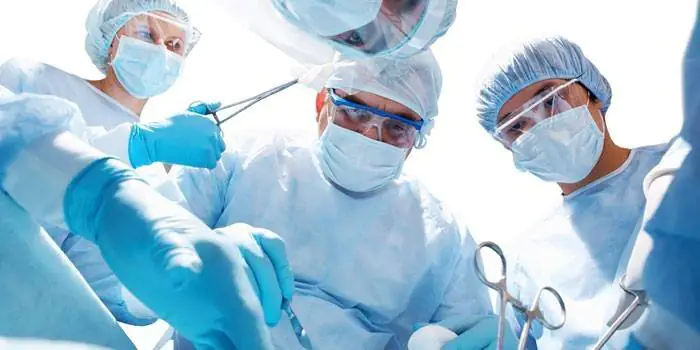
Laser mole removal
The innovative method is considered the fastest and most painless. Thanks to local anesthesia, a patient with such a dark formation will not feel anything. The process takes place in stages: ablative equipment removes the tubercle layer by layer. However, laser removal of moles is not so safe: after the procedure, a hole appears, which gradually heals, but not always. The beam destroys all the tissue of the mole, leaving nothing for oncological research, but the patient is left with a noticeable scar as a souvenir.
Nevi located on the face deserve special attention. They should only be removed by a qualified professional to avoid leaving keloid scars. After removing a mole, you need to be careful: you should protect the area affected by the laser from direct sunlight, covering this area with a plaster. When the rehabilitation period is over, the protection can be removed.
Removing moles using the radio wave method
High-frequency vibrations, which are transmitted through tissue, cause minimal damage to the surrounding skin surface - significantly less than with a surgical scalpel. Radio wave removal of moles does not require stitches or bandages. After treatment, a small wound remains on the body, covered with a dense crust. After some time, it heals, leaving a small spot, which also gradually disappears. The process of tightening the scar takes from 3 days to 2 weeks.
The radiosurgical method is suitable for eliminating deep skin formations, including:
- keratosis,
- warts,
- fibroids,
- moles,
- facial capillaries or spider veins,
- papillomas,
- scars left after acne.
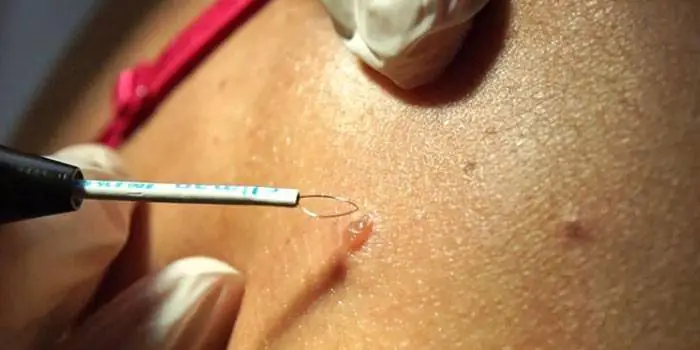
Mole removal with nitrogen
You can hear dubious reviews about cryodestruction. Some say the method is effective, others complain of pain and left marks. How do dermatologists remove a mole? The doctor sprays a small amount of liquid nitrogen onto the lump area. Cold temperatures freeze the tissue, including the area around the mark. Because of this, swelling may remain, which will subside on its own over time.
Removing moles with liquid nitrogen is painless. The patient may need to re-process the tissue, and the wound will take much longer to heal compared to the methods described above. The doctor is not always able to control the depth of penetration of the chemical, so there is a danger of freezing the “extra” area of skin.
Surgical removal of a mole
Excision of the tubercle is considered the most painful. In order to decide on surgery, you should consult a doctor and diagnose the formation, otherwise negative consequences may occur. Is it dangerous to remove moles with a scalpel? It is riskier to leave them, as melanoma may develop. It is better to remove all excess that is on the skin and sleep peacefully.
Removing moles surgically requires not only skill, but also special care after surgery. During the rehabilitation period, it is necessary to apply bandages with an antibiotic or healing ointment, changing them 2 times a day. Do not swim or wet the healing area. Fever after surgery is common.
Mole removal - consequences
Removing a hated spot on the body is not the end of the problem: the consequences of removing moles can be very different. Some patients recover quickly, while others suffer from complications. Removing skin lesions at home does not bring anything good. The wound begins to fester, inflammation, redness, and swelling appear. Where to remove a mole without consequences? Only at the doctor's.
You should contact the clinic if the following symptoms become noticeable after the procedure:
- excessive lymph secretion, bleeding;
- the appearance of suppuration;
- strong pain;
- temperature increase;
- changes in mental state.
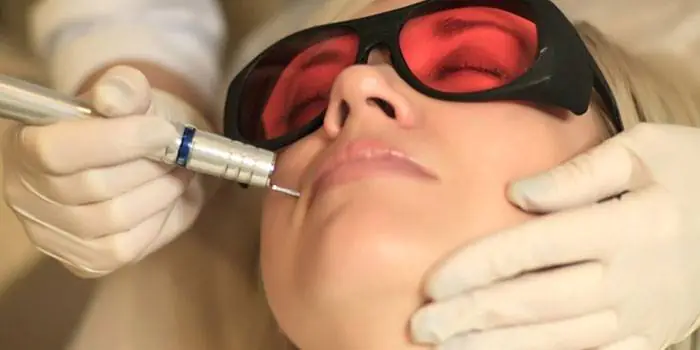
Price for mole removal
The cost of the procedure in Moscow depends on the medical institution; in rare cases, warts are removed free of charge. Before visiting the center, it is better to read reviews, call the reception to find out how much it costs to remove a mole, and ask about the procedure in more detail. The table shows the price range:
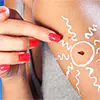
Until now, scientists have not come to a consensus why moles (nevi) appear on the skin, but it is known that heredity is one of the factors that can affect their number in a person. And if your relatives have not had problems with moles, there seems to be no reason to worry. In principle, these skin formations do not affect our lives in any way, and we do not even pay special attention to them. However, it happens that moles become inflamed, increase in size, itch, and many new formations appear on the body. It is known that the most harmless mole can turn into melanoma, and this is a dangerous skin cancer. What do you need to know about moles in order to feel calm and not worry about your health? Is it possible to remove moles for cosmetic or preventive purposes, and how to avoid the risk of skin cancer?
What is melanoma, and does it always appear at the site of a mole?
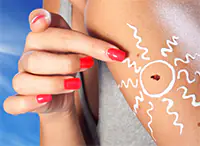 |
| The deterioration of the environmental situation in the last decade has provoked a sharp increase in the number of skin diseases |
Science knows a little more than a hundred types of cancer, but among them melanoma (skin cancer) is one of the most dangerous and aggressive malignant tumors. The insidiousness of this type of skin cancer is unparalleled. Even sunburn received in childhood can provoke the degeneration of a mole into melanoma in adulthood. Once occurring many years ago, the disease can lurk and develop unnoticed in the upper layers of the skin for a long period, up to 50 years. But then individual cells of the hidden tumor begin to grow deep into the body, and a mole or pigment spot becomes the focus of the tumor.
As cancer cells grow, they increase the size of the mole. But this is not the biggest danger. It is known that in the area of moles, malignant cells are not tightly connected to each other; they can break away from the main tumor at any time. Once in the circulatory system, melanoma cells provoke the development of numerous metastases - in the lymph nodes, lungs, eyes, brain, heart. Cancer statistics around the world have shown that every 5-10 years, cases of moles degenerating into melanomas increase exponentially. Today, the share of melanoma among all cancers is 3-4% of tumors.
Is it possible to remove a mole?
If moles do not spoil your appearance or cause you trouble, it is better not to touch them. However, there are times when a mole gets in the way, is constantly injured, rubs against clothes, or is too open and vulnerable. Under no circumstances should you use traditional methods to get rid of moles on your own.
There are several methods for removing moles, and only a specialist, after a thorough examination of the appearance of the neoplasm, can recommend one method or another:
- electrocoagulation - allows you to quickly remove a mole, and this method helps to stop the proliferation of malignant cells, if any;
- laser removal of moles;
- surgical removal under local anesthesia, after which several cosmetic stitches will have to be applied;
- effective removal using cryotherapy.
Under no circumstances should you remove moles yourself; this can lead to very serious consequences and even death.
In the last decade, cases of moles degenerating into malignant tumors - melanoma - have become more frequent. This disease is most often diagnosed in young women under 25 years of age; after breast cancer, it ranks second among diseases in women aged 30-35 years.
How to diagnose a mole before removal
Moles can and often even need to be removed in cases where they are a significant cosmetic defect or are systematically injured due to their location. In such cases, you should contact a cosmetologist or dermatologist, and only a specialist will decide whether it can be removed.
Moles are removed only in a hospital, after all the necessary examinations and tests.
- Initial examination by a dermatologist - the doctor examines the patient, finds out the circumstances of its origin and growth.
- Digital dermatoscopy is a modern method of visual diagnosis of a mole under high magnification using a dermatoscope.
- Skin ultrasound is an innovative technology with which, without incisions, you can determine the depth of the mole in the skin and choose the method of mole removal that is suitable for you - laser or surgical removal.
- Consultation with an oncologist will be necessary only if, at the previous stages of the examination, the specialist suspects the malignant nature of the mole being examined.
- Consultation with a plastic surgeon is necessary when surgical removal of a mole along with plastic surgery of the resulting defect is recommended.
Even an experienced dermatologist sometimes cannot immediately determine the initial stage of degeneration of a mole into a malignant tumor. Depending on the capabilities of the medical institution you contacted, the doctor may offer you an examination of the appearance of your mole using the following methods:
- biopsy (excision) followed by histological examination;
- the computer epiluminescent dermatoscopy method allows, without injuring the tissue, to examine the changes occurring in the deep layers of the mole and assess the degree of risk in connection with its removal.
Signs of degeneration of moles (nevi)
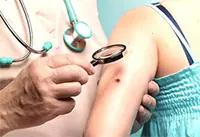 |
| It is possible to remove a mole, but only in a hospital, and you must first undergo an examination by an oncodermatologist |
Melanoma in our country is treated quite successfully, the percentage of fully recovered people is very high. True, for effective treatment, the stage at which treatment was started plays a huge role.
The pre-melanoma period is quite long, you just need to be careful about yourself so as not to miss the first symptoms of a change in the mole. If you notice changes in the shape or color of a mole within a month, be sure to consult with an oncodermatologist. In this case, we are talking about the need to “intercept” the disease at a stage when it can still be overcome.
Dangerous symptoms of changes in moles:
- reduction, change in color or sharp increase in pigmentation of the mole; uneven coloring;
- along the periphery of the mole a ring of coal-black nodules of unequal sizes is formed, which form a “black rosary”;
- “varnish” surface of the mole, lack of skin pattern on the mole, peeling;
- the appearance of an inflammatory halo around a red mole;
- change in the contours of the mole along the perimeter, formation of a “jagged” edge, blurring of the contour of the nevus;
- the mole increases in size, its boundaries blur;
- itching, tingling, burning and any other unusual sensations in the mole area;
- the appearance of cracks, tension, compactions, bleeding in the mole area.
Moles larger than 5-6 mm in size, as well as formations that sharply separate from the surface of the skin or are highly pigmented, require special, constant attention. People with such moles need to be examined regularly, at least twice a year.
Possible causes of melanoma
Experts are inclined to believe that the degeneration of moles into melanoma has moved from the category of rare diseases to common ones due to the deterioration of the environmental situation, the adverse effects of UV radiation from the sun, and the thinning of the ozone layer of the atmosphere.
To provoke the degeneration of a mole, an irritant, a push, is needed. The greatest danger for humans is too much exposure to the bright sun. Those most at risk for skin mutations from sun exposure are people with fair hair and red hair, pale skin and blue, gray or green eyes.
In second place among the reasons that can provoke the development of a malignant tumor at the site of a mole are temperature, chemical or mechanical injuries to nevi, attempts to remove the mole on their own and inadequate cosmetic interventions. Please note that if you accidentally damage or scratch a mole, there is no need to panic, nothing terrible actually happened. Only regular damage to a mole can lead to the risk of melanoma.
No matter how trite it sounds, you need to take care of yourself from a young age. A love of tanning in youth can result in skin cancer in adulthood. After swimming in a pond, be sure to dry yourself with a towel, because drops of water or sea salt crystals on the skin can act like lenses on a sunny day, several times increasing the harmful effects of direct sunlight. Never sunbathe after 10 o'clock and before 15 o'clock, this is the most dangerous period for health, the midday sun kills the immune system, it must be avoided. Neither an awning nor a beach suit can protect you from harmful ultraviolet rays.
The nevi were removed by surgical excision with suturing, and the papilloma was removed by electrocoagulation (cauterization).
Initial data: availability of Moscow insurance and an account with government services.
1. I went to the public services portal (PSU) and joined the clinic through it.
2. I went to the pgu and made an appointment with a therapist.
3. Received a referral to an oncologist from a therapist.
4. I came to the oncologist, received a conclusion about the removal of nevi and papillomas and a referral to a surgeon.
5. I went to the surgeon and received referrals for tests of UBC, OAM, biochemistry and blood group, HIV, syphilis, hepatitis.
6. I went to the surgeon for the second time, and they set the day for the operation there at the clinic.
7. I removed moles, now I go to bandages every other day.
8. On days 10-12 after surgery, the sutures are removed and the histology results are reported.
To speed up the process, after point 3, you could immediately make an appointment with the surgeon on the same day as the oncologist 30 minutes later. + choose a time from 8 to 10 am to donate blood on an empty stomach on the same day, then it would be minus 2 trips to the clinic. In general, I sat in line for a maximum of 30 minutes, but I got in on time. There was an opportunity to make an appointment for that day and the next, but it was an inconvenient break.
Among the current complications: allergic dermatitis to medical patches on the 5th day after surgery, blisters, it itches terribly. Hydrocortisone ointment really helped relieve the itching.



